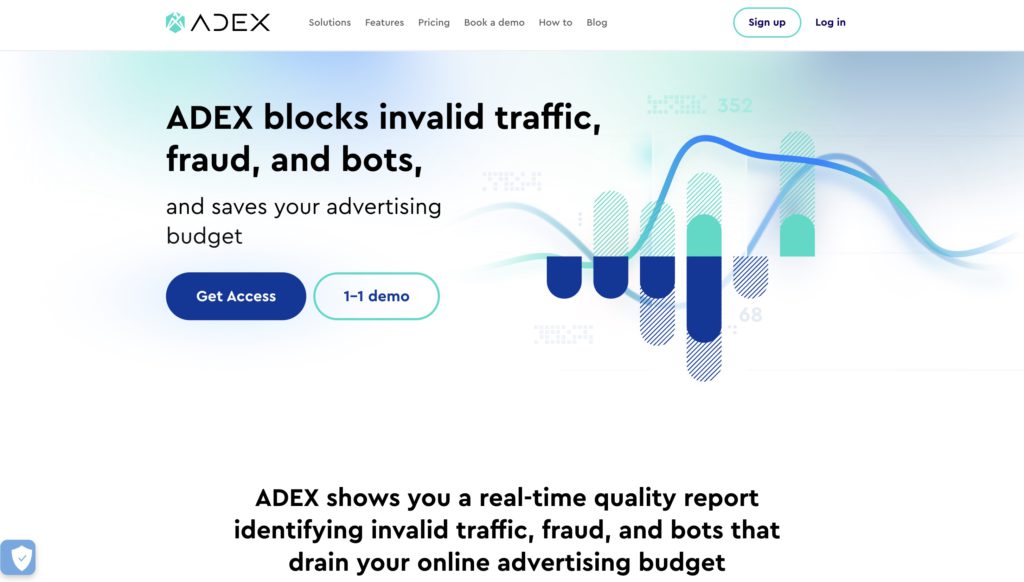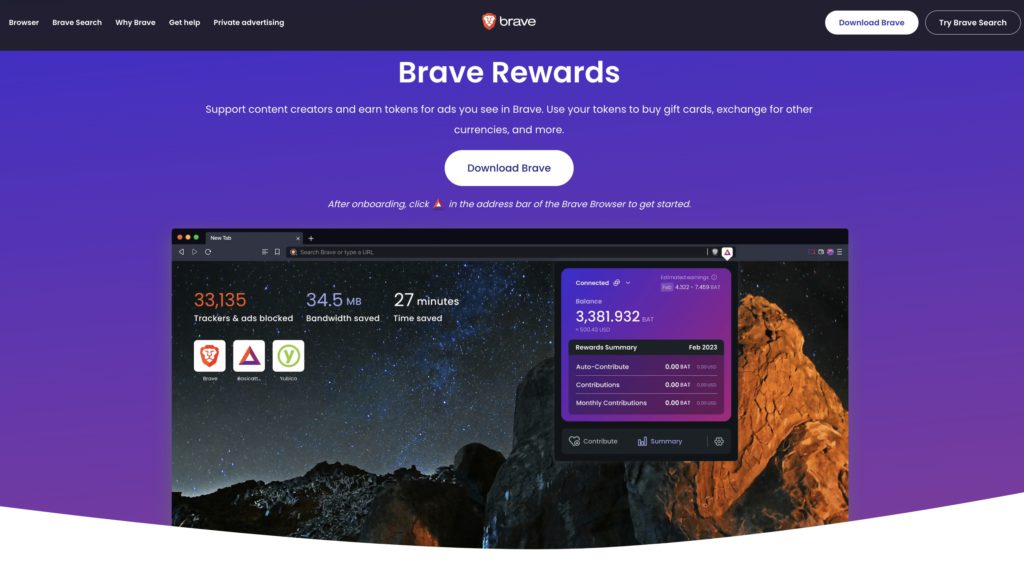
Web3 marketing represents a paradigm shift from the traditional centralized models, where intermediaries held control over user data and interactions. It leverages cutting-edge technologies such as blockchain, smart contracts, and decentralized networks to empower both marketers and users alike.
The significance of Web3 marketing lies in its ability to enhance personalization, foster trust, and create more meaningful connections with consumers. By prioritizing user data ownership and transparency, you can establish a stronger bond of trust with your target audience, leading to more authentic and engaging marketing experiences.
We’ll explore key trends and predictions that will shape the future of Web3 marketing. From enhanced personalization and decentralized advertising to the use of non-fungible tokens (NFTs) and gamification, we’ll explore the potential of these innovative strategies to transform the marketing landscape.
Enhanced Personalization and User Data Ownership
The Rise of User-Centric Marketing Strategies
In the era of Web3 marketing, user-centricity takes center stage as businesses recognize the importance of catering to individual preferences and needs. By adopting user-centric marketing strategies, you can create more personalized and targeted experiences for your customers, resulting in higher engagement and customer satisfaction.
One notable example of a company embracing user-centric marketing is Netflix. Leveraging its extensive data on user viewing habits and preferences, Netflix employs sophisticated algorithms to deliver personalized content recommendations. This approach has revolutionized the streaming industry, ensuring that users are presented with tailored suggestions based on their viewing history, resulting in an enhanced user experience and increased customer loyalty.
Empowering Users With Ownership and Control Over Their Data
Web3 marketing embraces the concept of user data ownership, giving individuals more control and autonomy over their personal information. This shift empowers users to decide how their data is collected, used, and shared, fostering a sense of trust and transparency.
One company that has prioritized user data ownership is Brave, a privacy-focused web browser. Brave allows users to opt into its privacy-preserving advertising model, where users are rewarded with Basic Attention Tokens (BAT) for engaging with ads. Users have the option to share their data anonymously with advertisers while retaining control over their personal information. This approach provides users with a choice and a sense of ownership, encouraging a more positive and mutually beneficial relationship with advertisers.
Leveraging Blockchain Technology for Data Transparency and Security
Blockchain technology plays a pivotal role in ensuring data transparency and security in Web3 marketing. Its decentralized and immutable nature enables secure data storage, verification, and transactions, instilling confidence in both marketers and users.
A prime example of blockchain-based data transparency and security is the project Civic. Civic uses blockchain technology to create a secure identity verification system. Users can choose to share specific personal information with trusted third parties without compromising their overall privacy. This decentralized approach eliminates the need for multiple data silos and enhances the security of user information, establishing a more trustworthy and reliable marketing ecosystem.
By leveraging blockchain technology, companies can also combat ad fraud and enhance the accuracy of ad impressions. The AdEx platform, for instance, uses blockchain to provide a transparent and fraud-resistant advertising network. Advertisers can ensure that their ads reach genuine audiences, while publishers can guarantee fair compensation for their inventory, fostering trust and efficiency in the advertising space.

Decentralized Advertising and Influencer Marketing
The Transition from Centralized Advertising Platforms to Decentralized Networks
In the realm of Web3 marketing, there is a notable shift from traditional centralized advertising platforms to decentralized networks. This transition offers numerous benefits, including increased transparency, reduced middleman fees, and improved targeting capabilities.
As mentioned above, one example of a decentralized advertising platform is AdEx. Built on blockchain technology, AdEx allows advertisers and publishers to directly connect and transact without the need for intermediaries. This decentralized approach ensures that advertisers have full control over their ad budgets and targeting parameters, while publishers receive fair compensation for their ad space. By eliminating intermediaries, AdEx reduces costs and increases transparency, fostering a more efficient and mutually beneficial advertising ecosystem.
Smart Contracts and Tokenization in Advertising and Influencer Campaigns
Web3 marketing leverages smart contracts and tokenization to revolutionize advertising and influencer campaigns. Smart contracts, powered by blockchain technology, enable transparent, automated, and verifiable agreements between parties involved in a campaign.
For instance, the influencer marketing platform Indahash uses smart contracts to streamline influencer collaborations. Brands and influencers can define campaign terms, deliverables, and compensation within the smart contract, ensuring transparency and accountability throughout the process. Tokenization further enhances this process by facilitating instant and secure payments using cryptocurrencies or utility tokens, eliminating lengthy payment delays and unnecessary intermediaries.
Increase +180%
leads
demos
sales
bookings
from your website with AI
Get more conversions from your existing website traffic delivering personalized experiences.

Enabling Direct and Transparent Interactions Between Brands and Influencers
Web3 marketing empowers brands and influencers to directly engage with each other in a transparent and mutually beneficial manner. By leveraging blockchain technology, brands can verify influencers’ authenticity, track the performance of campaigns in real time, and ensure accurate compensation.
Platforms like Rally offer a unique approach to influencer marketing through the use of social tokens. Influencers can create their own social tokens, enabling them to engage with their audience on a deeper level. These tokens provide fans with access to exclusive content, voting rights, or other perks, allowing influencers to cultivate a dedicated community and establish direct connections with their audience.
NFTs and Branded Digital Assets
Non-fungible tokens (NFTs) have emerged as a groundbreaking tool in Web3 marketing, offering unique opportunities for brands to engage with their audiences and generate revenue. NFTs are digital assets representing ownership or proof of authenticity of a specific item, artwork, or collectible, recorded on a blockchain.
Brands can leverage NFTs as a marketing tool by creating limited-edition digital assets or collaborating with artists and influencers to develop exclusive NFT collections. This approach enables brands to tap into the growing interest in NFTs and leverage the scarcity and uniqueness of these assets to drive engagement and loyalty. A notable example is when the luxury fashion brand Gucci was reimagined in an NFT Art Collection, which generated significant buzz and engagement within the crypto community.
NFTs can also serve as a new revenue stream for brands. By minting and selling branded NFTs, you can unlock new monetization opportunities and create additional value for your audience. Taco Bell, for example, introduced NFT collectibles featuring digital artwork of their iconic menu items. These limited edition NFTs were auctioned, generating both brand exposure and revenue.
Another case of leveraging branded digital assets is the NBA’s Top Shot platform. Using NFT technology, NBA Top Shot allows fans to collect and trade officially licensed digital basketball highlights, known as ‘moments.’ Each moment is a unique digital asset, featuring memorable plays from NBA games. The platform has gained immense popularity, engaging fans by offering them the opportunity to own and showcase their favorite basketball moments digitally.
By creating branded digital assets, you can foster a sense of exclusivity and community among your audience, encouraging active participation and brand advocacy. These assets can be distributed as rewards for specific actions or milestones, incentivizing user engagement and loyalty.
Gamification and Reward Systems in Web3 Marketing
Gamification has become an increasingly popular strategy in Web3 marketing, as it enhances user engagement and fosters a sense of fun and excitement. By incorporating gamification elements into marketing campaigns, brands can create interactive experiences that captivate and motivate their audience.
Token-based reward systems have also gained prominence in this new environment, leveraging blockchain technology to create transparent and secure reward mechanisms.
By creating and distributing social tokens, you can empower your communities and provide unique benefits to token holders. These benefits may include access to exclusive content, voting rights on community decisions, or participation in events and experiences. Social tokens enable community members to have a stake in the brand’s success and facilitate a sense of belonging and ownership.
A notable example of token-based rewards is the Brave browser’s Basic Attention Token (BAT). Brave rewards users for their attention by providing them with BAT tokens for viewing privacy-respecting ads. Users can then use these tokens to support their favorite content creators or redeem them for various rewards. This token-based rewards system enhances user engagement, incentivizes active participation, and cultivates a loyal community.
Social tokens facilitate decentralized governance, allowing community members to participate in decision-making processes. Through mechanisms such as token-based voting, community members can collectively shape the direction and initiatives of the brand. This decentralized governance approach enhances transparency, trust, and inclusivity within the community.
Social tokens also facilitate direct interactions between brands and customers. Through token-holder communities or dedicated platforms, you can engage in conversations, gather feedback, and involve your customers in co-creation and collaboration. This direct interaction fosters a deeper understanding of customer needs and preferences, enabling brands to deliver more tailored and impactful marketing initiatives.

Augmented and Virtual Reality in Web3 Marketing
Blending Virtual Experiences with Physical Environments in the Web3
Augmented Reality (AR) and Virtual Reality (VR) technologies are revolutionizing the way brands engage with their audiences in Web3 marketing. By blending virtual experiences with physical environments, you can create unique and immersive interactions that captivate and resonate with consumers.
AR allows digital content to be overlaid in the real world, enhancing the user’s perception and providing interactive experiences. For example, beauty brands like Sephora have developed AR apps that enable users to try on virtual makeup products, allowing them to visualize how different shades and styles would look on their own faces. This blending of virtual and physical realms bridges the gap between online shopping and the tangible experience, increasing user engagement and confidence in purchase decisions.
Immersive Advertising and Storytelling through AR and VR Technologies
AR and VR technologies offer unparalleled opportunities for immersive advertising and storytelling in Web3 marketing. Brands can create captivating narratives and experiences that deeply resonate with their target audience.
With VR, brands can transport users to virtual environments, enabling them to fully immerse themselves in unique and memorable experiences. For instance, luxury automotive brand Audi has used VR to create virtual test drives, allowing potential customers to experience the thrill of driving their latest models in a simulated environment. This immersive approach elevates the traditional test drive and establishes a lasting impression on consumers.
AR and VR technologies also enable interactive and engaging storytelling. Brands can develop AR or VR experiences that unfold narratives and provide users with interactive elements and choices. This dynamic storytelling approach deepens user engagement and creates a more personalized and impactful connection between the brand and the consumer.
Integration of Web3 Technologies to Enhance AR and VR Marketing Efforts
Web3 technologies can enhance AR and VR marketing efforts by introducing decentralized and transparent elements. By leveraging blockchain technology, you can ensure the authenticity, scarcity, and provenance of digital assets used in AR and VR experiences.
For example, blockchain-based platforms like CryptoKitties have incorporated AR features, allowing users to view and interact with their digital collectible cats in augmented reality. The integration of Web3 technologies ensures the uniqueness and ownership of these digital assets, adding value and authenticity to the AR experience.
The use of Web3 technologies can facilitate peer-to-peer transactions within AR and VR experiences. Smart contracts and digital currencies enable seamless and secure transactions for in-world purchases or experiences, enhancing user convenience and enabling a vibrant virtual economy.
Conclusion
Web3 marketing brings forth a new era of personalized and immersive experiences. By prioritizing user data ownership and transparency, you can establish trust and foster authentic connections.
Decentralized advertising platforms and smart contracts enable direct and transparent interactions between brands and influencers. NFTs and branded digital assets provide exclusive engagement opportunities and new revenue streams. Gamification, rewards systems, and social tokens empower communities and enhance user participation. Augmented and virtual reality technologies blend virtual and physical experiences, amplifying storytelling.
Embracing these trends is crucial to stay ahead and engage audiences in meaningful ways. Web3 marketing revolutionizes the industry with innovation and user-centricity at its core.





